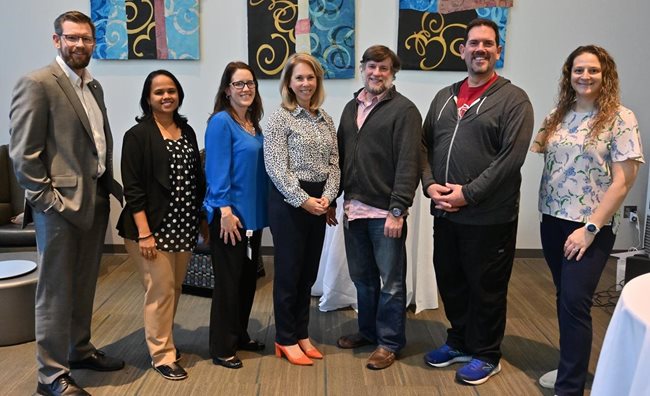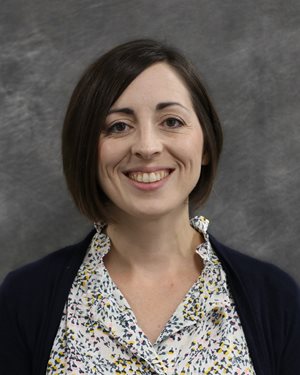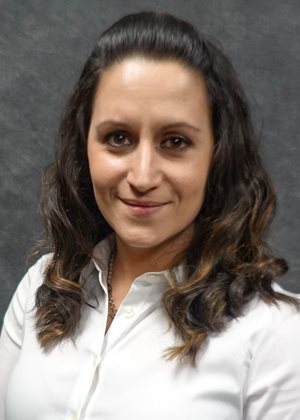
A cohort of Salus University faculty members recently authored an academic poster that was a highlighted winner at a recent Interprofessional Education Collaboration (IPEC) virtual poster fair showcase. Titled “Evolution of an IPE Case: An Interprofessional Approach for Large Student Cohorts,” the event aimed at sharing the research and scholarship of teams who have developed and implemented interprofessional education for collaborative (IPECP) projects.
 The lead author for Salus was Radhika Aravamudhan, PhD, CCC-A, dean of the University’s Osborne College of Audiology. Co-authors included J. Chad Duncan, PhD, CRC, CPO, director of the Orthotics and Prosthetics (O&P) program; Michelle Fischer, MMS ‘09, PA-C, assistant professor in the Physician Assistant (PA) Studies program; James Konopack, PhD, dean of the College of Health Sciences, Education and Rehabilitation (CHER); Cara Orr, MS, MMS, PA-C, assistant professor in the PA program; Kelly Salmon, SLPD, CCC-SLP, BCS-S, CLT-LANA, NDC, assistant professor in the Speech-Language Pathology (SLP) program; Robert Serianni, MS, CCC-SLP, FNAP, chair and director of the SLP program; Andrea Tyszka, OTD ‘18, MS, OTR/L, SIPT, associate professor in the Occupational Therapy (OT) program; and Melissa Vitek, OD ‘95, FAAO, dean of the Department of International and Continuing Education (DICE).
The lead author for Salus was Radhika Aravamudhan, PhD, CCC-A, dean of the University’s Osborne College of Audiology. Co-authors included J. Chad Duncan, PhD, CRC, CPO, director of the Orthotics and Prosthetics (O&P) program; Michelle Fischer, MMS ‘09, PA-C, assistant professor in the Physician Assistant (PA) Studies program; James Konopack, PhD, dean of the College of Health Sciences, Education and Rehabilitation (CHER); Cara Orr, MS, MMS, PA-C, assistant professor in the PA program; Kelly Salmon, SLPD, CCC-SLP, BCS-S, CLT-LANA, NDC, assistant professor in the Speech-Language Pathology (SLP) program; Robert Serianni, MS, CCC-SLP, FNAP, chair and director of the SLP program; Andrea Tyszka, OTD ‘18, MS, OTR/L, SIPT, associate professor in the Occupational Therapy (OT) program; and Melissa Vitek, OD ‘95, FAAO, dean of the Department of International and Continuing Education (DICE).
According to Dr. Aravamudhan, the topic for the poster came from the evidence-based practice course at Salus, which she has co-taught with Dr. Vitek for more than a decade.
“Because all the first-year students take the course, there was a great opportunity to bring the interprofessional element to it. Students learn the content about evidence-based practice and how they apply it to each of the professions,” said Dr. Aravamudhan. “So, what we did was develop a case and the poster is about how that case evolved and expanded with multiple professions at Salus.”
Each facilitated class session began with a large group review of interprofessional education (IPE) competencies and a reminder of the small group objectives for the day.
 By incorporating multiple health concerns and functional deficits into a single patient presentation, the activity integrated the IPE competencies across the professions mentioned above. More than 300 students were then broken into small interprofessional cohorts of eight to 10 to work on their case study project, under the guidance of assigned faculty facilitators. The class met in small group settings over the course of the semester. During the first week, students were tasked with developing a clinical question. The second week students had to search for articles that would answer their clinical question, a skill they learned in the evidence-based practice class. Then the following week students joined together to determine which article answered their clinical question, how they would frame it, and put together a presentation.
By incorporating multiple health concerns and functional deficits into a single patient presentation, the activity integrated the IPE competencies across the professions mentioned above. More than 300 students were then broken into small interprofessional cohorts of eight to 10 to work on their case study project, under the guidance of assigned faculty facilitators. The class met in small group settings over the course of the semester. During the first week, students were tasked with developing a clinical question. The second week students had to search for articles that would answer their clinical question, a skill they learned in the evidence-based practice class. Then the following week students joined together to determine which article answered their clinical question, how they would frame it, and put together a presentation.
Dr. Aravamudhan pointed out that interprofessional education is woven into the fabric at Salus and the class is the first entry point for the students’ interprofessional education experience.
“At the end of the day, the patient benefits the most when they have an interprofessional team involved in their care,” said Dr. Aravamudhan. “We want to teach the students from the beginning how to work together as a team and maintain those relationships even after they graduate.”
IPEC is an interprofessional collaborative that drives safe, high-quality, accessible, person-centered care and improved population health outcomes. Working in collaboration with academic institutions, IPEC promotes, encourages and supports efforts to prepare future health professionals to enter the workforce ready for interprofessional collaborative practice that helps ensure the health of individuals and populations.